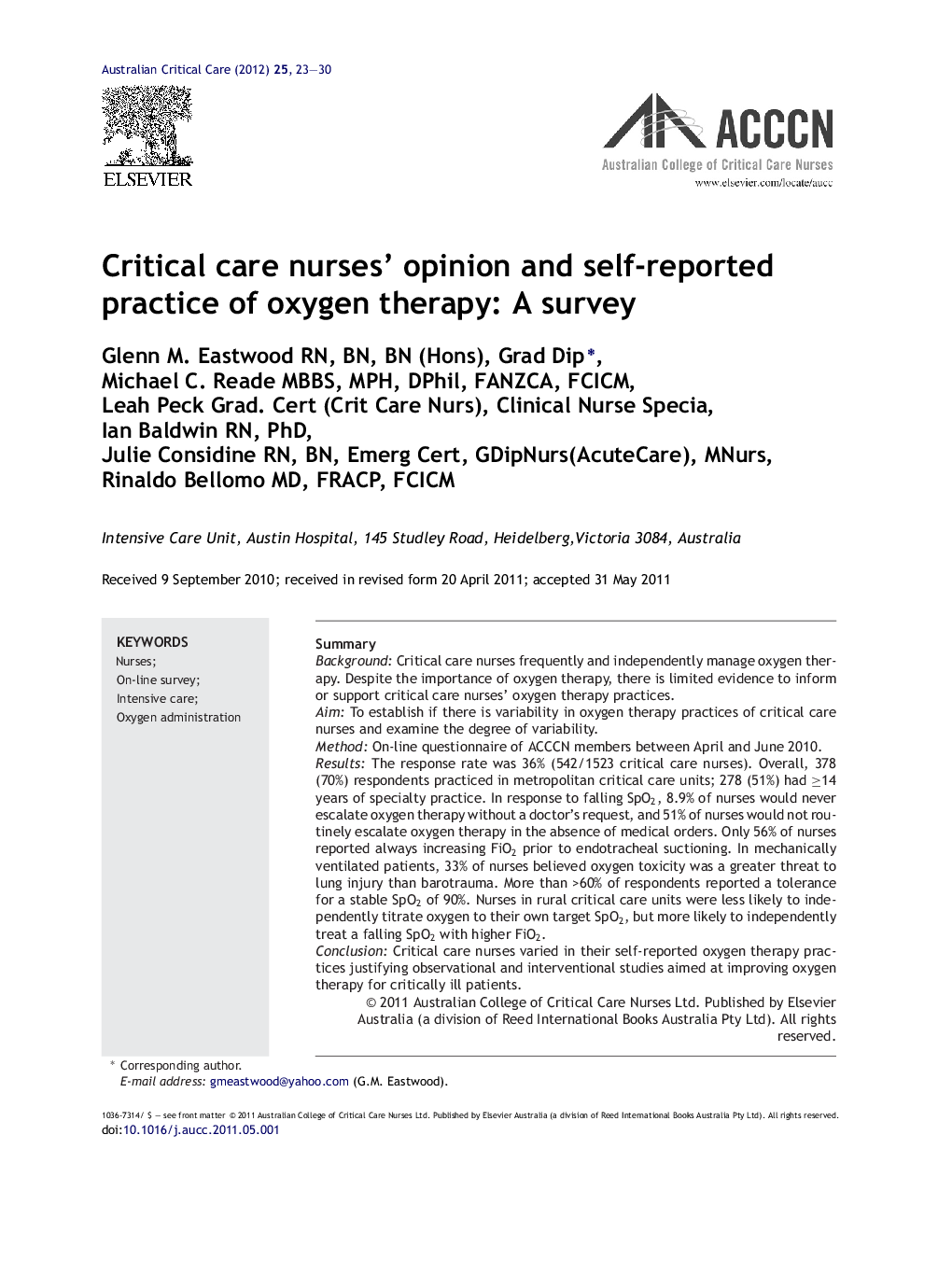| Article ID | Journal | Published Year | Pages | File Type |
|---|---|---|---|---|
| 2607455 | Australian Critical Care | 2012 | 8 Pages |
SummaryBackgroundCritical care nurses frequently and independently manage oxygen therapy. Despite the importance of oxygen therapy, there is limited evidence to inform or support critical care nurses’ oxygen therapy practices.AimTo establish if there is variability in oxygen therapy practices of critical care nurses and examine the degree of variability.MethodOn-line questionnaire of ACCCN members between April and June 2010.ResultsThe response rate was 36% (542/1523 critical care nurses). Overall, 378 (70%) respondents practiced in metropolitan critical care units; 278 (51%) had ≥14 years of specialty practice. In response to falling SpO2, 8.9% of nurses would never escalate oxygen therapy without a doctor's request, and 51% of nurses would not routinely escalate oxygen therapy in the absence of medical orders. Only 56% of nurses reported always increasing FiO2 prior to endotracheal suctioning. In mechanically ventilated patients, 33% of nurses believed oxygen toxicity was a greater threat to lung injury than barotrauma. More than >60% of respondents reported a tolerance for a stable SpO2 of 90%. Nurses in rural critical care units were less likely to independently titrate oxygen to their own target SpO2, but more likely to independently treat a falling SpO2 with higher FiO2.ConclusionCritical care nurses varied in their self-reported oxygen therapy practices justifying observational and interventional studies aimed at improving oxygen therapy for critically ill patients.
